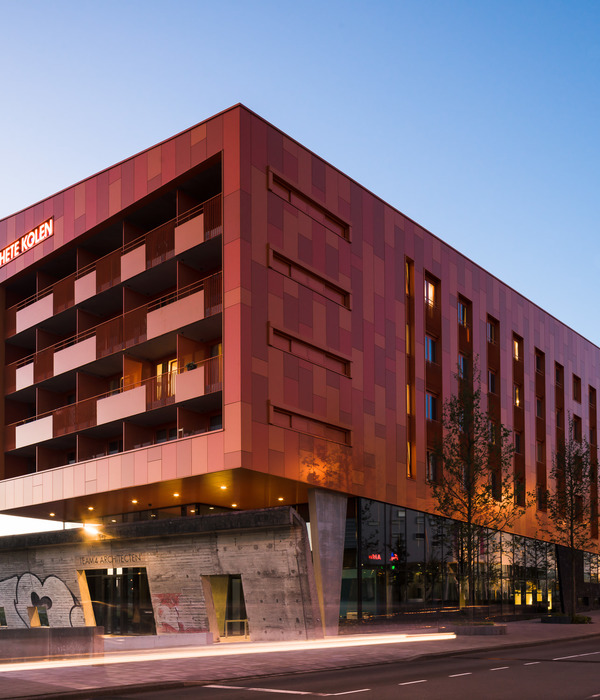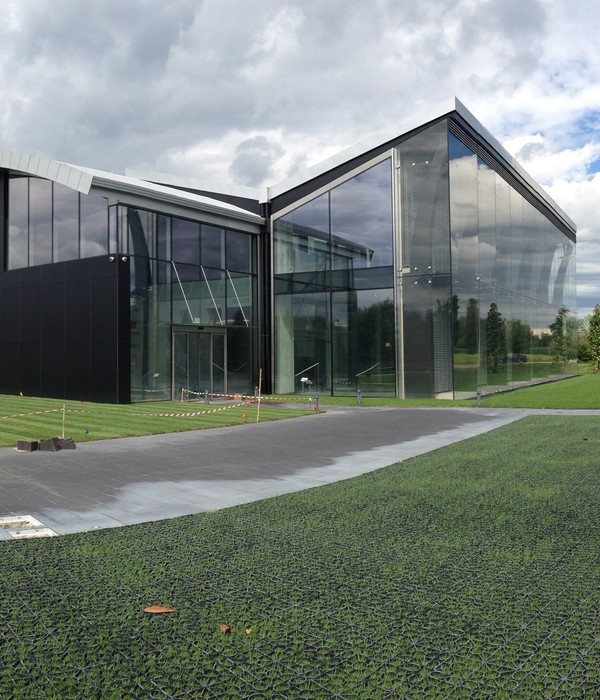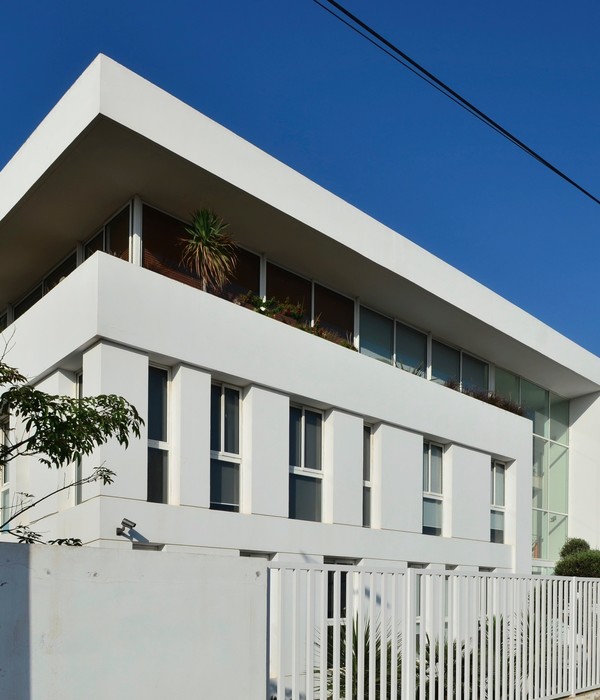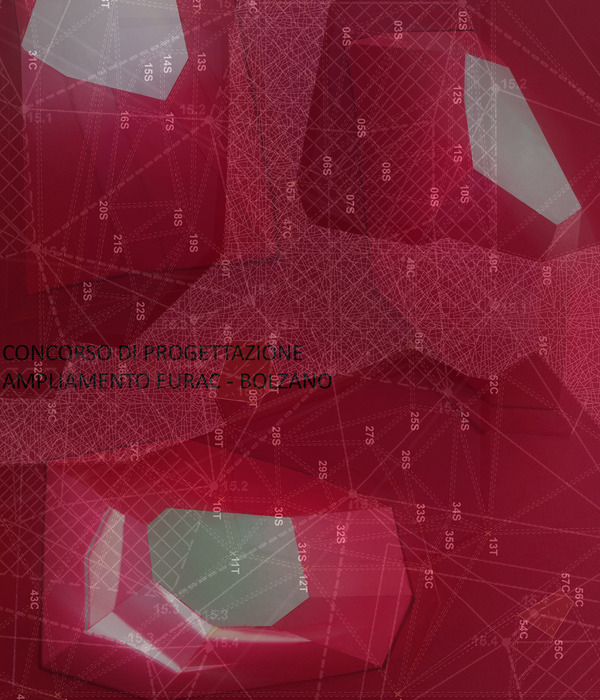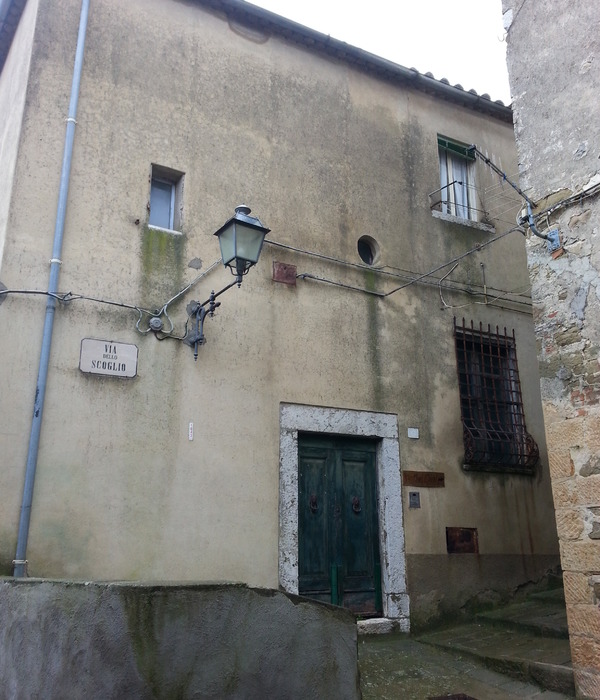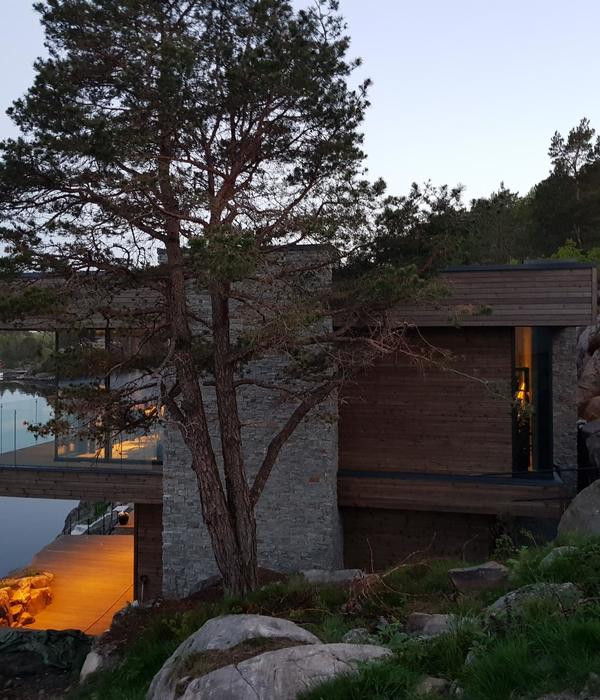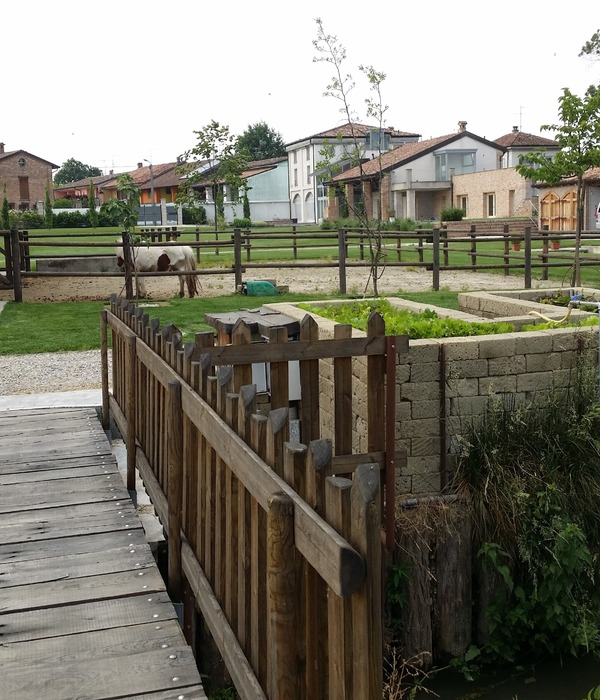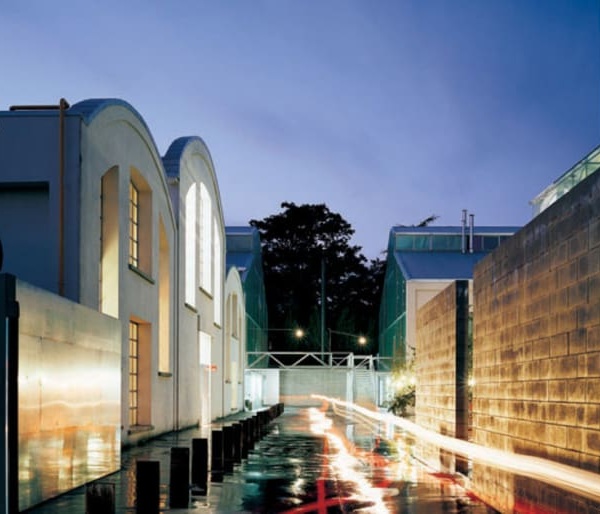© Jack Hobhouse
杰克·霍伯斯
架构师提供的文本描述。2009年,霍金斯·布朗被牛津大学任命为设计新的理论和实验物理大楼。大学的愿景是建立一个协作的工作环境,与尖端实验室并肩作战,为世界领先的物理研究提供前所未有的设施。
Text description provided by the architects. Hawkins\Brown was appointed by the University of Oxford in 2009 to design the new theoretical and experimental physics building. The University’s vision was for a collaborative working environment that would sit alongside cutting edge laboratories to provide unprecedented facilities for the university’s world-leading research in Physics.
Text description provided by the architects. Hawkins\Brown was appointed by the University of Oxford in 2009 to design the new theoretical and experimental physics building. The University’s vision was for a collaborative working environment that would sit alongside cutting edge laboratories to provide unprecedented facilities for the university’s world-leading research in Physics.
© Jack Hobhouse
杰克·霍伯斯
分配给新大楼的场地给设计师带来了许多具有挑战性的限制。在牛津市中心东北的公园路和基布尔道的交界处,突出的位置与几座列出的建筑物非常接近,特别是由威廉·巴特菲尔德于19世纪70年代设计的Keble学院的一级新哥特式建筑。一棵受保护的雪松树坐落在靠近大门的地方,该遗址还被牛津中心城市保护区(CentralCityProtectionArea)的两侧所包围。这座建筑在北面的大学公园有着广阔的视野,它的聚集是为了适应不同的地方环境,其中包含了一系列的尺度和设置。
The site allotted for the new building presented a number of challenging constraints for the designers. At the junction of Parks Road and Keble Road in the north east of Oxford City Centre, the prominent location sits in close proximity to several listed buildings, notably the grade I listed neo-gothic buildings of Keble College, designed in the 1870s by William Butterfield. A protected cedar tree sits adjacent to the main entrance and the site is also enclosed by Oxford’s Central City Conservation Area on two sides. The building enjoys expansive views across the University Parks to the north and its massing has been arranged to respond to the varied local context, which contains a range of scales and settings.
The site allotted for the new building presented a number of challenging constraints for the designers. At the junction of Parks Road and Keble Road in the north east of Oxford City Centre, the prominent location sits in close proximity to several listed buildings, notably the grade I listed neo-gothic buildings of Keble College, designed in the 1870s by William Butterfield. A protected cedar tree sits adjacent to the main entrance and the site is also enclosed by Oxford’s Central City Conservation Area on two sides. The building enjoys expansive views across the University Parks to the north and its massing has been arranged to respond to the varied local context, which contains a range of scales and settings.
Model © Jack Hobhouse
型号:杰克·霍伯斯
这座建筑由青铜、玻璃和膨胀的铜网插入板组成,并有一个自然风化的青铜翅片组成的网格。科布尔学院的节奏、垂直强调和色彩与直立的哥特式风格相呼应。大图片窗口框架视图进出内部协作空间,创建在建筑物内的活动和它的上下文之间的视觉联系。
The building is clad in a combination of bronze, glass and expanded copper mesh insert panels with a grid of naturally weathering bronze fins. The rhythm, vertical emphasis and colour respond to the upright gothic style of Keble College. Large picture windows frame views into and out of the internal collaboration spaces, creating visual connections between activities within the building and its context.
The building is clad in a combination of bronze, glass and expanded copper mesh insert panels with a grid of naturally weathering bronze fins. The rhythm, vertical emphasis and colour respond to the upright gothic style of Keble College. Large picture windows frame views into and out of the internal collaboration spaces, creating visual connections between activities within the building and its context.
© Jack Hobhouse
杰克·霍伯斯
牛津中部的建筑受到了城市的“Carfax高度”政策的限制,它限制了位于牛津中部的Carfax塔1.2公里内的新建筑,高度为18米。为了使大学所需的住宿完全补充到现场,包括大量的服务和设备,以实现极其稳定和严格控制的实验室环境,必须开发一个16米深的地下室。这房子有两层设施,满足全球最高标准。
Buildings in central Oxford are restricted by the city’s “Carfax Height” policy, which limits new buildings within 1.2km of Carfax Tower in the centre of Oxford to 18m in height. In order to fit the full complement of accommodation required by the university onto the site, including an extensive amount of services and plant to achieve extremely stable and tightly controlled laboratory environments, the development of a 16 metre-deep basement was necessary. This houses two floors of facilities that meet the highest global standards.
Buildings in central Oxford are restricted by the city’s “Carfax Height” policy, which limits new buildings within 1.2km of Carfax Tower in the centre of Oxford to 18m in height. In order to fit the full complement of accommodation required by the university onto the site, including an extensive amount of services and plant to achieve extremely stable and tightly controlled laboratory environments, the development of a 16 metre-deep basement was necessary. This houses two floors of facilities that meet the highest global standards.
© Jack Hobhouse
杰克·霍伯斯
在坚固的地下室楼层内,建立了结构隔离的“黑匣子”实验室,这些实验室需要严格的隔振标准。它们被安置在重达54吨的整体混凝土龙骨板上,安装在精密的阻尼系统上,为纳米级实验提供稳定的平台,这些实验的敏感程度足以受到包括东九英里的M40高速公路在内的振动源的影响。
Within the robust basement floors, structurally isolated “black box” laboratories that require onerous standards of vibration isolation have been created. These are housed on top of monolithic concrete keel slabs, the heaviest of which weighs 54 tonnes, and are mounted on sophisticated damping systems to provide a stable platform for nano- scale experiments that are otherwise sensitive enough to be affected by vibration sources that include the M40 Motorway, nine miles to the east.
Within the robust basement floors, structurally isolated “black box” laboratories that require onerous standards of vibration isolation have been created. These are housed on top of monolithic concrete keel slabs, the heaviest of which weighs 54 tonnes, and are mounted on sophisticated damping systems to provide a stable platform for nano- scale experiments that are otherwise sensitive enough to be affected by vibration sources that include the M40 Motorway, nine miles to the east.
© Jack Hobhouse
杰克·霍伯斯
主要的工厂设备被容纳在地下室中,在结构之间具有物理断裂,以隔离可能影响实验的任何振动。
Major plant equipment is housed in a sub-basement with a physical break between the structures to isolate any vibration that may affect experiments.
Major plant equipment is housed in a sub-basement with a physical break between the structures to isolate any vibration that may affect experiments.
尽管对实验物理实验室进行了大量维修,但Hawkins\Brown的建筑仍获得了BREEAM优异的评价。
Despite the heavy servicing of the Experimental Physics laboratories, Hawkins\Brown’s building achieved a BREEAM Excellent rating.
Despite the heavy servicing of the Experimental Physics laboratories, Hawkins\Brown’s building achieved a BREEAM Excellent rating.
Section Diagram © Wigwam Visual
剖面图(Wigwam Visual)
中央中庭,通过它上升一系列的楼梯和着陆,提供了一个焦点的建筑,并建立连续性之间的两个部分。登机坪配备了黑板和非正式座位,作为舞台,便利了研究人员的介绍,并鼓励他们一起测试、讨论和发展他们的想法。这是支持强大的视觉链接横跨中庭和进入个别的研究办公室。这方面符合大学校方的愿景,就是要打破传统的学术工作模式,向工业界学习,转变其工作方法。
The central atrium, through which rises a series of stairs and landings, provides a focal point for the building and establishes continuity between the two halves. The landings are equipped with blackboards and informal seating and act as stages, facilitating presentations by researchers and encouraging them to test, discuss and develop their ideas together. This is supported by strong visual links across the atrium and into individual research offices. This aspect is in line with the university’s vision for the Department to break with the traditional academic working model and learn from industry to transform its working methods.
The central atrium, through which rises a series of stairs and landings, provides a focal point for the building and establishes continuity between the two halves. The landings are equipped with blackboards and informal seating and act as stages, facilitating presentations by researchers and encouraging them to test, discuss and develop their ideas together. This is supported by strong visual links across the atrium and into individual research offices. This aspect is in line with the university’s vision for the Department to break with the traditional academic working model and learn from industry to transform its working methods.
© Jack Hobhouse
杰克·霍伯斯
Architects Hawkins\Brown
Location Oxford OX1 3PU, United Kingdom
Area 8950.0 m2
Project Year 2018
Photographs Jim Stephenson, Jack Hobhouse
Category University
{{item.text_origin}}


